Svanir Wilderness Homestay has four cottages built to replicate traditional tribal Santal houses surrounded by more than 1000 trees on one-acre land.
What’s so special about it is the reflection of the spirit and culture of the local tribal Santal and their way of life.
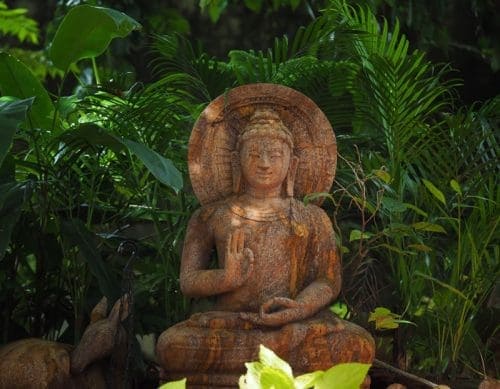
Rainwater harvesting and bathroom water harvesting as well as drip irrigation are some initiatives taken by the founders of this Homestay to save and conserve water.
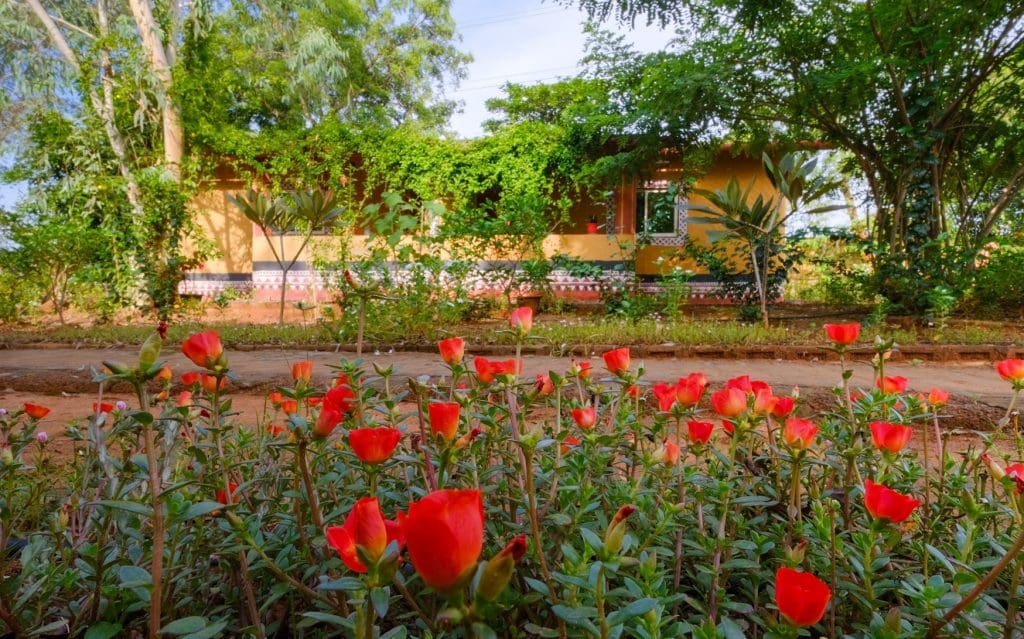
Indrani Chakraborty, Co-founder, Svanir Wilderness Ecostay Bhubaneswar Odisha shares, ” In taking an inspiration forward for independent women, in my own humble way I, too, want to prove with the help of my small all women-led homestay, that it is possible to run a venture like this.”
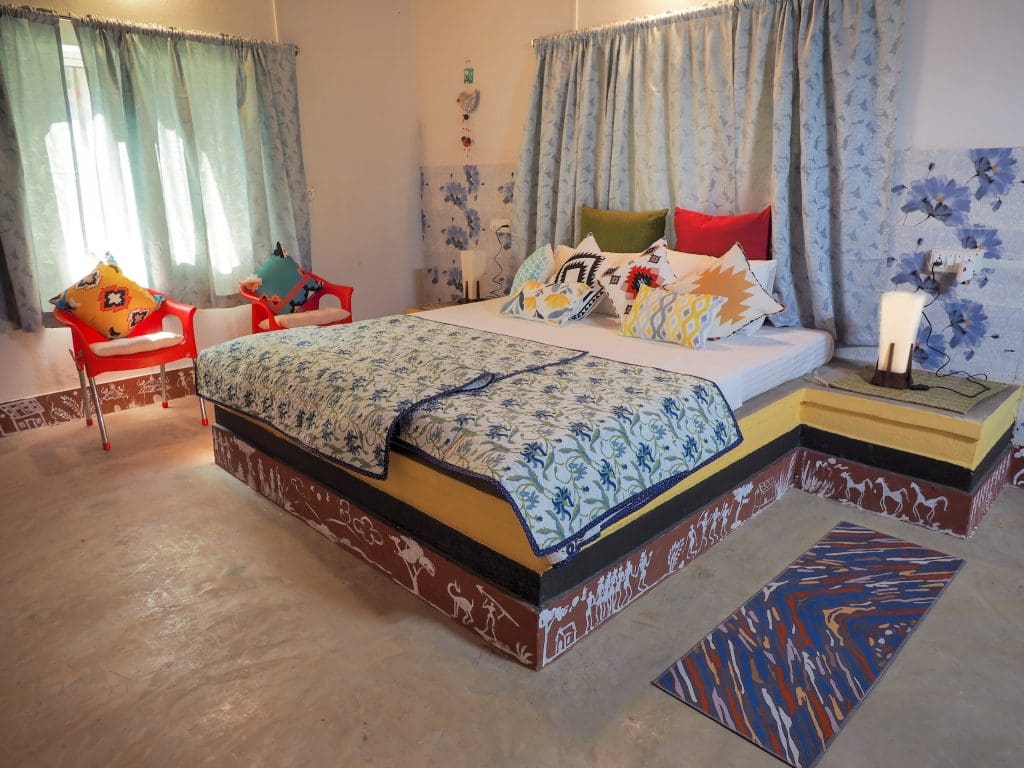
She feels that Odisha has always been overshadowed by West Bengal and given a miss by discerning, nature-loving travellers mostly because of poor infrastructure. With this homestay inspired by Shantiniketan and teeming with flora and fauna, the founders want to encourage locals to open their homes and convince the government and city planners that such accommodations near national parks, historical monuments, beaches, and places of interest can connect remote areas and put them on the travel map.
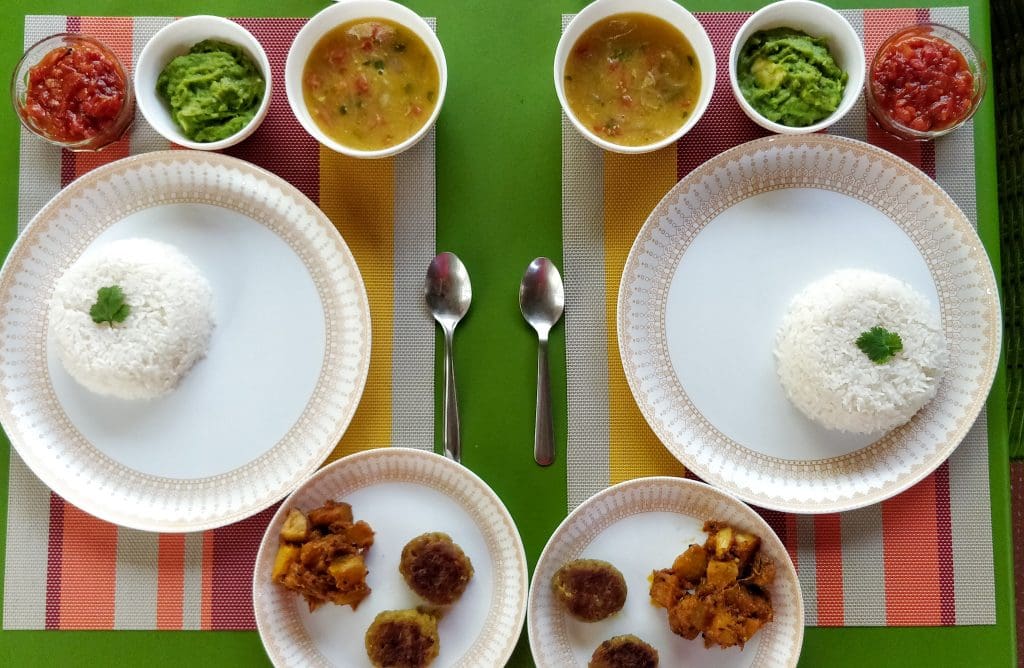
Admits Indrani Chakraborty, “We came here with our interests in mind. But after working with the simple village ladies, I feel responsible for them. Now, in my small way, I support six families and with more footfall hopefully many more. It is a safe space for anyone looking for a creative or meditative sanctuary, comfort home food, a homely vibe, flowers, trees, and friendly animals around.”
Cyclone Fani and two years of Covid have put a dampener on everyone’s spirits. Shares Indrani Chakraborty, “But I’m proud to say that even at the peak of the COVID outbreak, our patrons trusted us, and first-time travellers who were seeking a peaceful getaway kept us busy. We suffered a tough time as a family, but the support from the community saw us through.”
She adds, “More people knowing about our initiative will help me and my village community immensely. Also, a hope that my story might inspire some more like-minded people to start their own homestay and help build a stronger community together.”
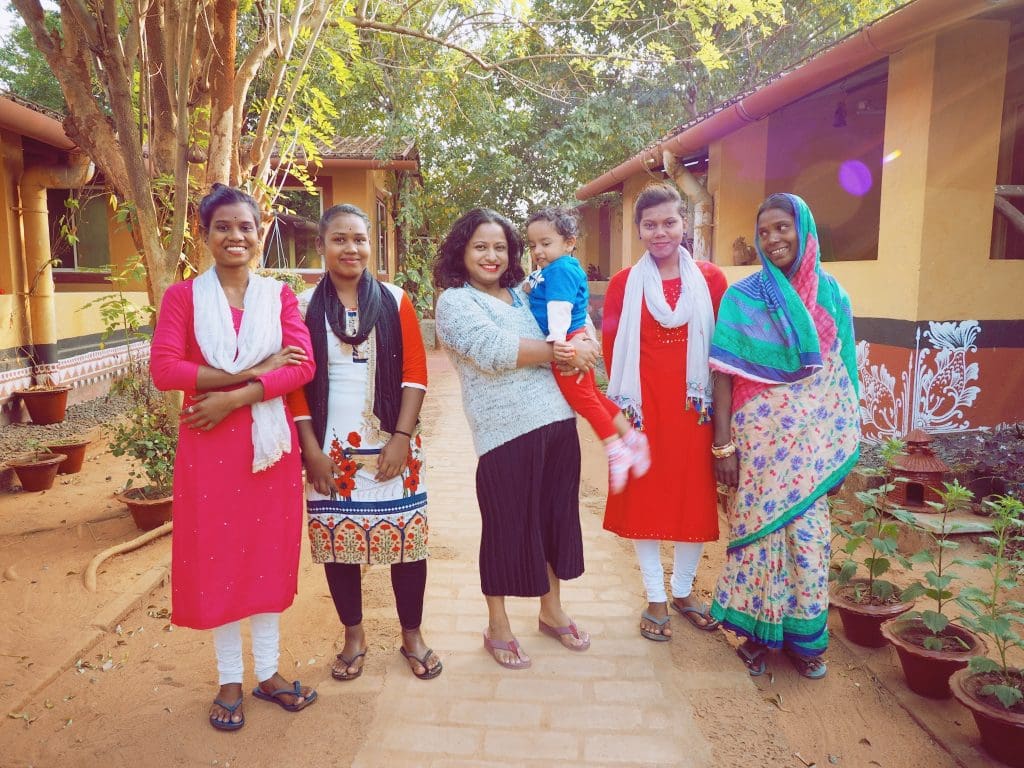
More about The Tribal Santal, one of the populous tribal communities of India
Shares Indrani Chakraborty, ” G B Mukherji, my dad has had the privilege of interacting with and learning about “root-based” living from many tribes (over 700 of them) who live in India.”
That poverty has nothing to do with chaotic, wasteful living is perhaps the most valuable lesson that he learned way back in the nineteen seventies. How? When G B Mukherji saw how wonderfully designed tribal houses and villages were, and how advanced were their lifestyles, weaving scant possessions with nature conservation.
G B Mukherji was particularly drawn to the picturesque tribal Santal villages; their naturally ventilated houses using locally available, multi-coloured mud, hand compacted into strong bricks, plastered, and mirror polished by the hand of the simplest of housewives.
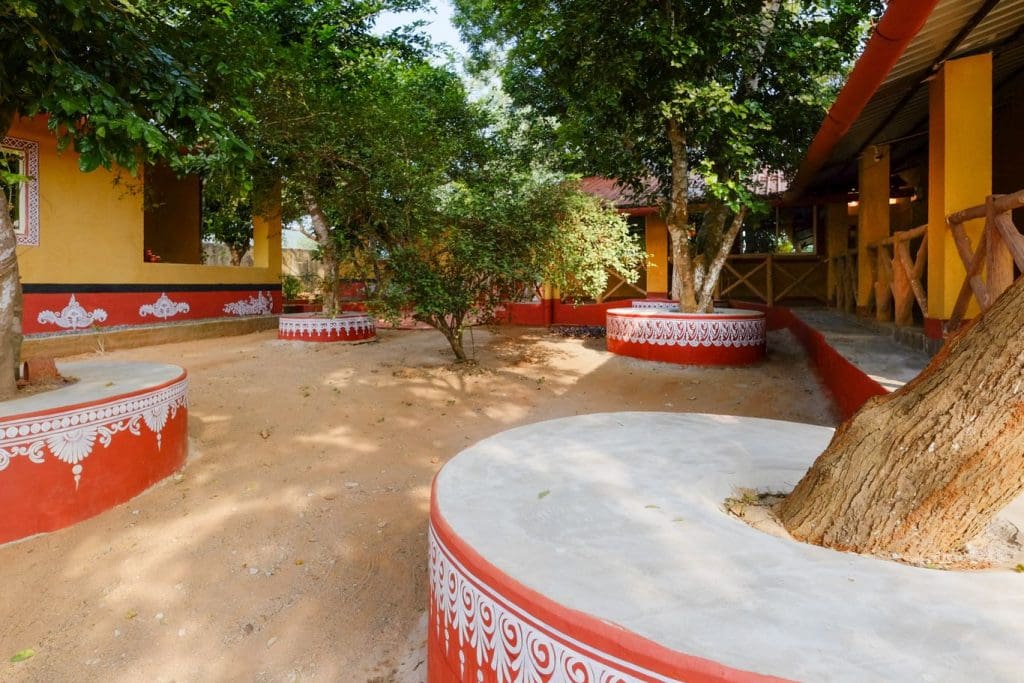
“From that time on, ” says Indrani Chakraborty, “I guess it was inevitable that when we thought of building our cosy homestay, tribal Santal architecture would be our inspiration. Before starting construction of Svanir ( literally meaning ‘Own Nest’) we went on frequent ecce to nearby tribal Santal villages. Our idea was that we would talk to the village chief and persuade him to gather a few villagers who would come to Bhubaneshwar to replicate their beautiful abode.”
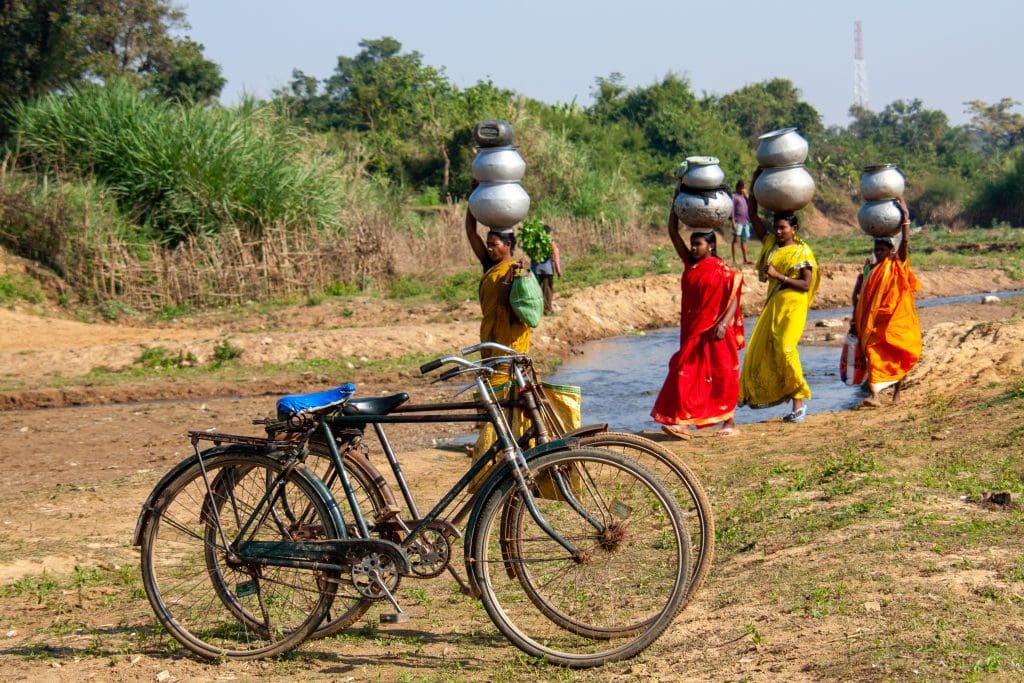
The Santals, one of the populous tribal communities of India, are mainly found in the states of Odisha, Jharkhand, West Bengal, Bihar and Assam.
The word ‘Santal’ is derived from two words; ‘Santa’ meaning calm and peaceful and ‘Ala’ meaning man. In the past, the tribal Santal lead a nomadic life but gradually they have come to settle down.
She recounts, “Most tribal Santal villages we visited were surrounded by agricultural fields, pastures, ponds, graveyard and a common place of worship known as jaher. Located at the village outskirts the jaher is the sacred groove comprising sal trees within which their deities are believed to be residing. Usually, the tribal Santal villages are large and the number of households varies from fifty to a hundred. Their houses enclosed within boundaries are arranged in a linear pattern on both sides of a wide village street.”
She added, “While my father was busy talking to the village chief, I was awestruck by the overall cleanliness of the village and how beautiful the earthen colours of the painted houses looked under the setting Sun. While I was taking pictures of this fleeting moment when the light was just perfect, a girl entered my frame. She had her brother securely fastened around her hips inquisitively looking at my camera. As soon as I moved my gaze to her she scampered inside her house. “
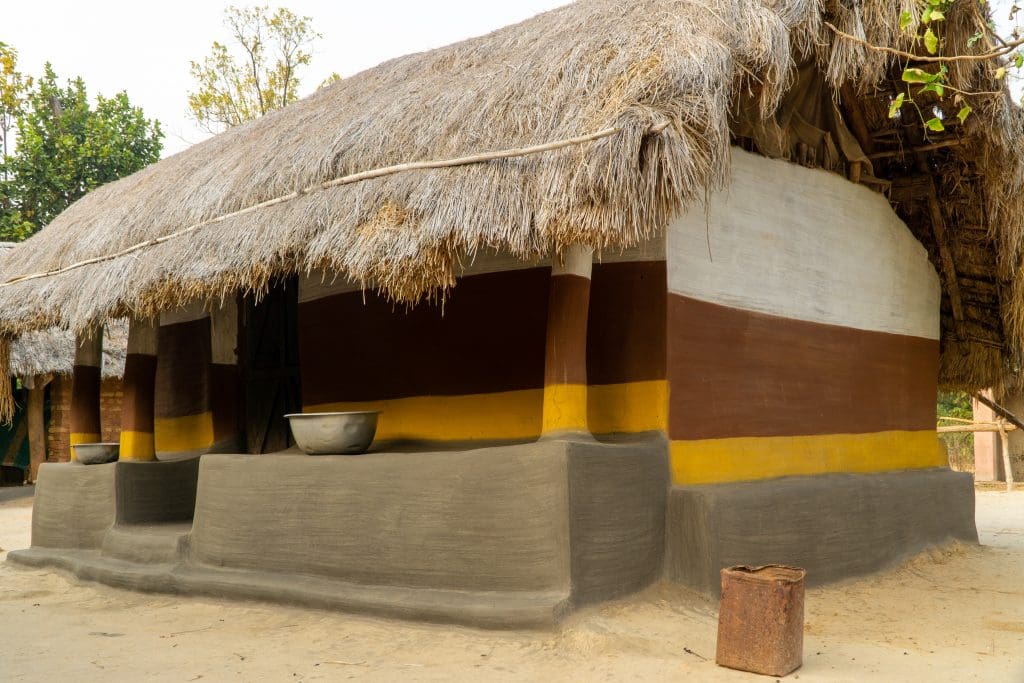
Indrani Chakraborty followed her hoping to get a picture and curious to see how the huts looked from inside. The house contained an assortment of items like a string cot, husking lever (ukhud), winnowing fans (hatah), gourd ladles, and earthen pots (hulutukuj), bamboo baskets (tunki), paddy containers (bandi and broomsticks (janah). But the girl was nowhere to be seen.
Later Indrani came to know that the houses had been freshly lepa “whitewashed” because of the festive month of Pausa. Each house had to be lovingly decorated and given a mantle of artwork with “Dheky” pounded rice powder. The motifs were mostly birds, animals, flowers, “Kash Phool”, and festivities represented by geometric line art; simple yet full of artistic wealth. Such art adorns every guest cottage in Svanir.
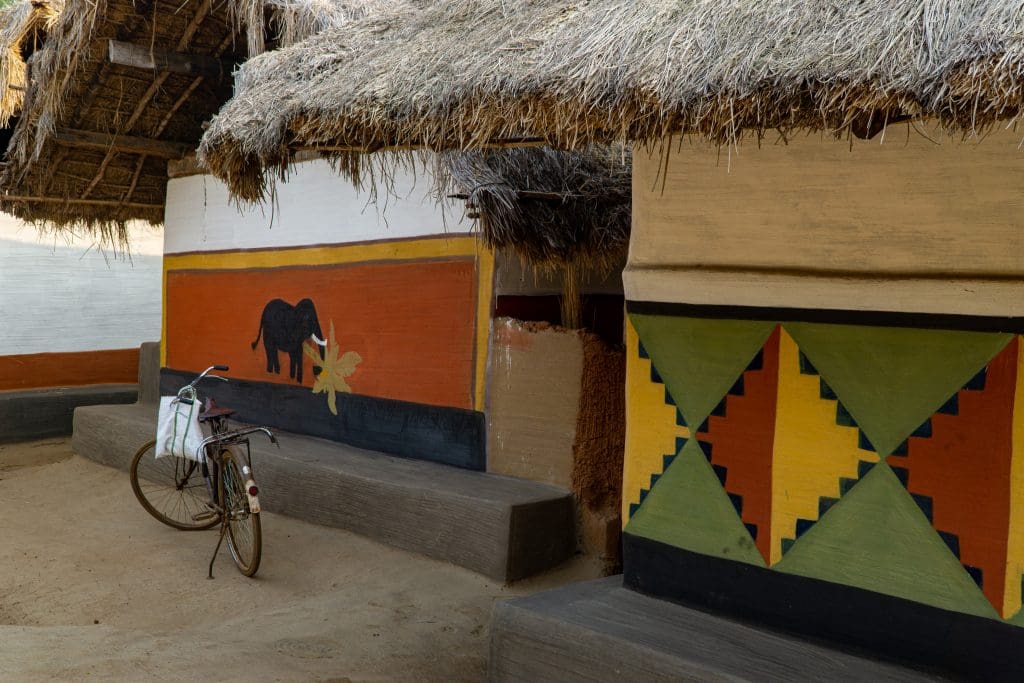
After an intense session of discussion about when would the village comes, how many men would be required, where will the right mud start the basic structure be procured from, and finally how much would it cost, Indrani and her team were invited to have lunch with the village chief’s family.
She shares, “Like us, rice is the tribal Santal staple food. Along with rice we were treated to a vegetable curry made of brinjal, papaya, ladies’ finger, and pumpkin. As we were their guest of honour dry fish and mutton were also prepared for us. The food was delicious. At the end of the meal, we were offered some handia, a fermented rice beer which we politely decided as we had some way to try back.”
It was decided before the entire team arrived, that Soren ( lead builder) and a few elders would come to see the land and chalk out the layout. “We were adamant,” she says, ” that just like the tribal Santal we wouldn’t cut any trees to build our man-made jungle. On their first visit, one of the elders stopped at one spot, looked at the tree canopy and cried out in childlike excitement, “Meetha Chaya, meetha chaya”. We stood transfixed, not understanding what was happening.”
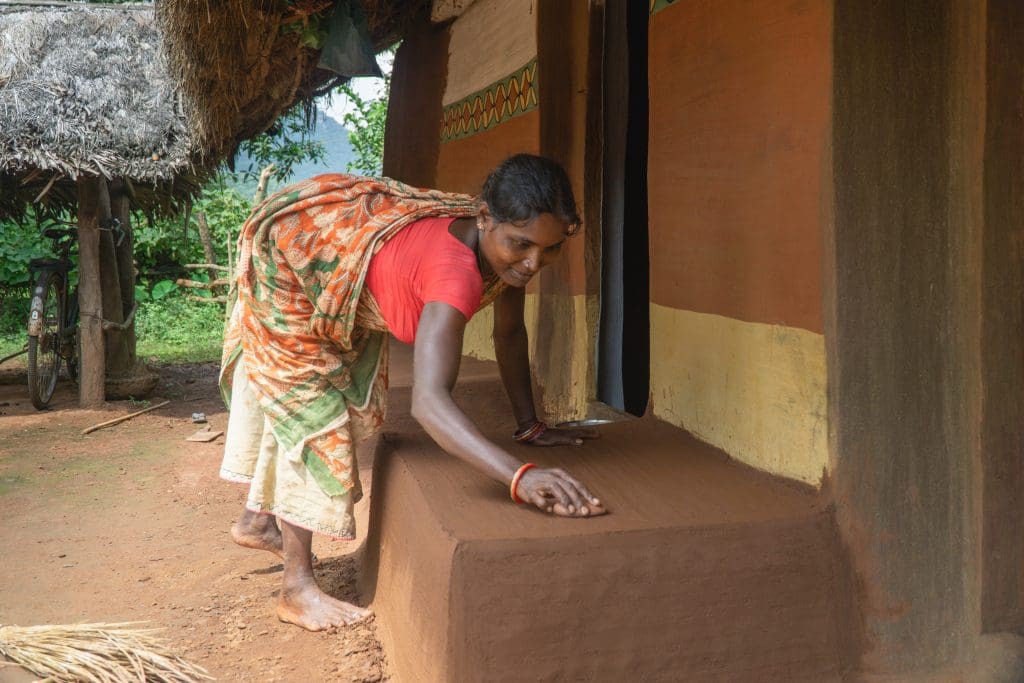
Indrani recalls, “Sunaram Soren saw the bewilderment in our eyes and then pointed his forefinger at the trees. “Karanja and Limbo trees at the same spot,” he said. “The shadow of these two trees cast the sweetest and holiest shadows at this spot”, he continued. “This has to be your energy centre. Don’t forget”. Limbo is the local word for neem and Karanjo is Millettia pinnata.
“Now is a good time to tell you,” shares Indrani, “that like any other tribal community, the tribal Santal also strongly believe in witchcraft and black magic. They believe that the witches or diens who have become so by learning the Dien Vidya (the technique of witchcraft) have the evil powers to cause harm to others and bring natural calamities.
Similarly, religion (dharma) is considered to be a part and parcel of the tribal Santal life. They believe in the existence of several deities, ghosts, and spirits residing in the hills, forests, and streams and their ancestral spirits guiding every aspect of their life.
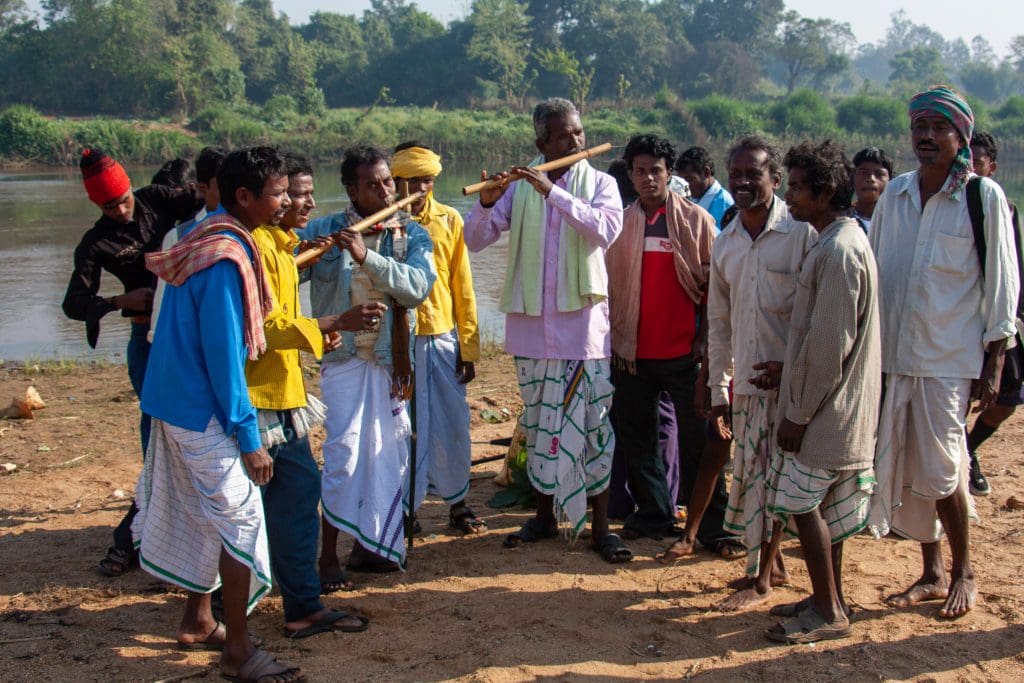
“Through the course of the following year,” she remembers, “we kept going back and forth to Dhenkanal, naively believing we could finish our homestay in one year once we got the team to start work (in fact it took us almost 3 years to complete the project). But every time we were met with unexpected and in hindsight funny obstacles.
” Sometimes it was the sowing season, other time the harvest season, and once Soren sheepishly replied“ I was all set to come but the boy who herds my goats has left. Now, who will look after them.” We looked at the sea of goats and realised that these goats were worth more than 5-6 lakhs. Honestly, how could he let them graze alone with no one to protect them?
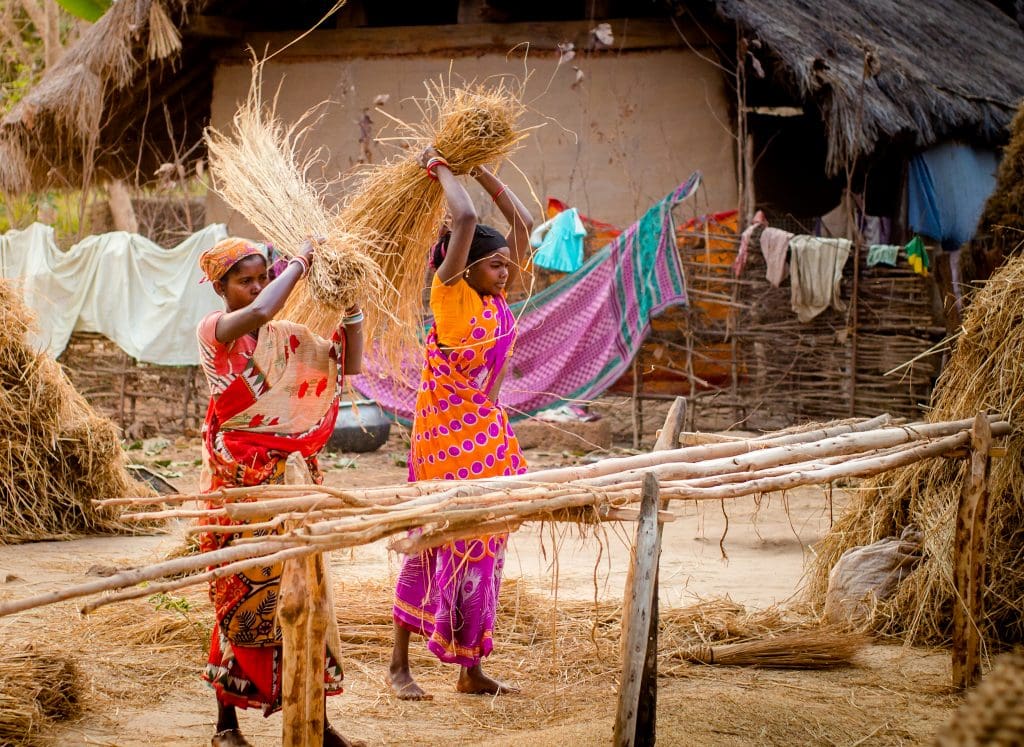
Erok-sim marks the beginning of sowing the seeds in the fields. Harihar-sim is observed at the time of the sprouting of seedlings. Iri-Guldi-sim is observed for the offering of the first millet crop to the deities. Jantal observed during September is a celebration of the first fruit eating of the winter rice crops to appease the hill God. Saharai, the cattle festival observed in November, is one of the main festivals of the tribal Santal.
They worship cattle to increase cattle wealth. Magh-sim observed in the month of Magha (January-February) marks the end of the year. During Baha festival, the tribal Santal offer the first fruit of mahua, wildflowers, and fruits to the jaher deities. Besides these, the santali festival list has festivals like Karama and Makar Sankranti which are also celebrated with pomp and ceremony for the prosperity and happiness of their community.
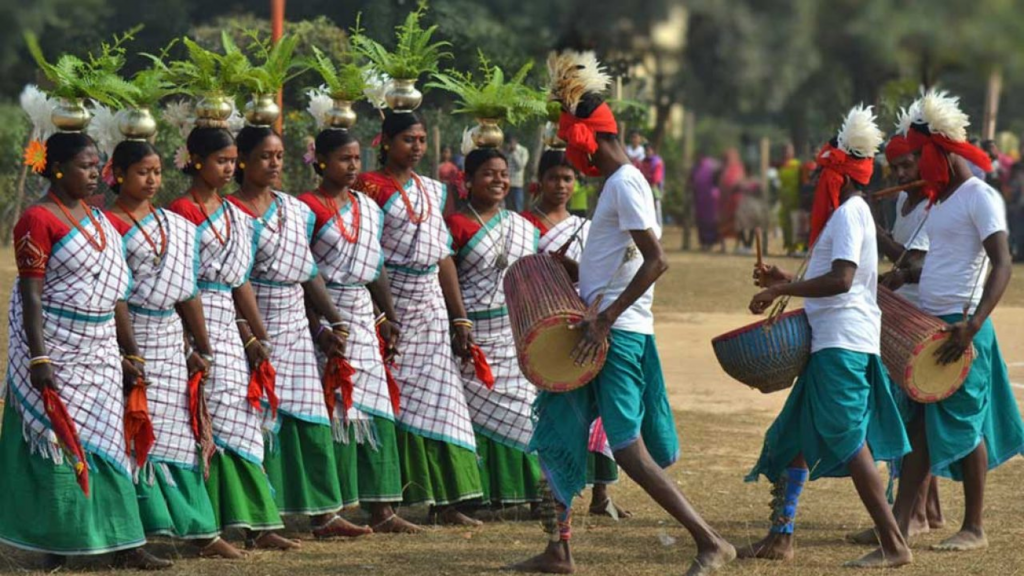
“But the most frequent excuse was festivals. We were bewildered by the sheer number of festivals which they observed. The tribal Santal are agriculturists and their festivals are mainly connected with various agricultural activities and a few are connected with hunting and collection of forest produce. Their most important festivals are Erok-sim, Harihar-sim, Iri-Guldi-sim, Janthar, Saharai, Magha-sim, and Baha, which are associated with agricultural operations.
“To cut the long story short,” Indrani says, ” our timings never matched. But our frequent trips gave us a lot of ideas and made us realise, that sometimes all you can do is live life one day at a time and be happy with what you possess. We wish that someday we can invite Soren and the village elders to our homestay and show them what we have lovingly created. Would they be proud I wonder?”
Read More: Latest



